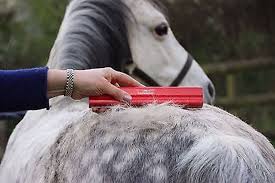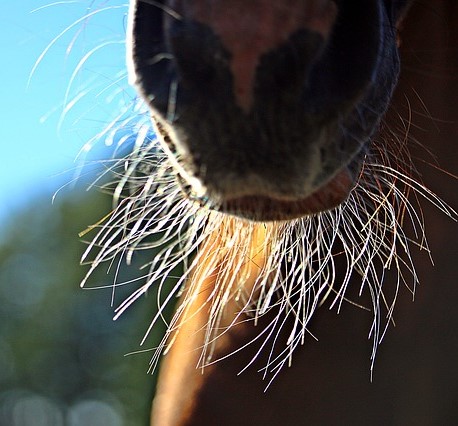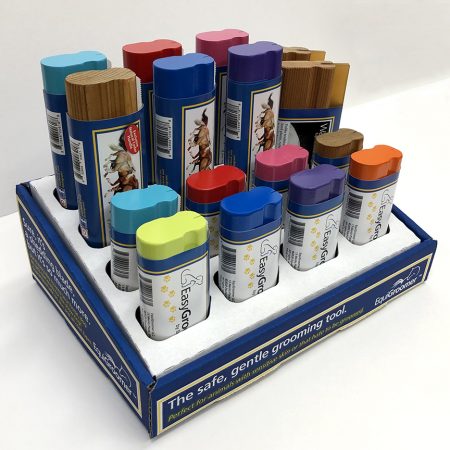The surest way to tell spring has sprung is by the amount of horsehair circulating through the barn!
But horse spring shedding can also tell you about their health.
If you missed our earlier blog,
“Your Horse’s Spring Shedding: What you Need to Know,”
click here to read it now.
According to veterinarian Carol Shwetz, “the shedding of a horse’s winter coat is a complex physiological process that can reveal information about the horse’s general health.” In other words, horse spring shedding can also shed a light on certain equine health conditions.
What can you learn through your horse’s shedding in the springtime?
Horse Spring Shedding: A Quick Review

- Spring shedding is triggered by the increasing hours of daylight with the spring solstice (not warmer weather). The increase of daylight hours causes the production of hormones triggering spring shedding and new hair growth.
- The shedding period typically occurs over 6-8 weeks.
- Regular grooming, brushing and exercise will expedite the shedding process. (Thought to be due to increased blood flow to the skin and the stimulation of hair follicles.)
- Shedding patterns usually remain consistent year-to-year including:
- The rate of shedding; and
- The order of shedding.
Use our 20-Piece Equine Tack Shop Start Kit to make spring grooming easier, faster and more comfortable for your horse!
Next, let’s take a closer look at the specific equine health issues that may be revealed by spring shedding.

Equine Spring Shedding & Potential Health Issues
Itchiness or Patchy Shedding
If the shedding horse is displaying unusual itching (known as pruritus) along with patchy shedding, this may be due to external parasites like lice or ticks that chew and/or bite the horse. Reach out to your regular veterinarian for proper diagnosis and treatment as soon as possible.
Spring Shedding that is Later than Normal
Shedding that is later than normal could mean:
- Equine Cushing’s Disease or PPID. Also known as low thyroid function.
- The need for deworming.
- Dark barn interiors. Ensure your horse receives a consistent 16 hours of daylight each day (both natural and artificial). NOTE: this is not a “quick fix.” It may take up to 60 days for shedding to begin or increase.
Incomplete or Failure to Properly Shed
If a horse is not shedding normally, it could be an indication of:

- Equine Cushing’s Disease (especially in older horses).
- Poor nutrition (along with long “cat” or guard hairs under the belly and chin); or
- Parasites.
For healthy and effective horse spring shedding, they must have proper nutrition before the shedding season with:
- Proper vitamins (A and B) and trace minerals (copper and zinc).
- Enough protein and amino acids.
With the proper nutrition in place, the formulation of the necessary hormones for shedding will be triggered as nature intended.
Your Horse’s Coat Can Tell You More than Just About His Nutrition
If you’ve eliminated potential medical issues that may be affecting your horse’s spring shedding, try increasing your grooming, brushing and exercising to jumpstart your horse’s natural processes.

Learn more about how to protect your horse from spring mud and the abundance of moisture everywhere!

Spring means shedding and a LOT of it! Maintaining your grooming routine will help ensure proper shedding and new hair growth for your horse!
Stock up on our EquiGroomer tools in your tack room and retail store today!
For individual or bulk orders, call 860-573-0604
or click here to send us an email.


